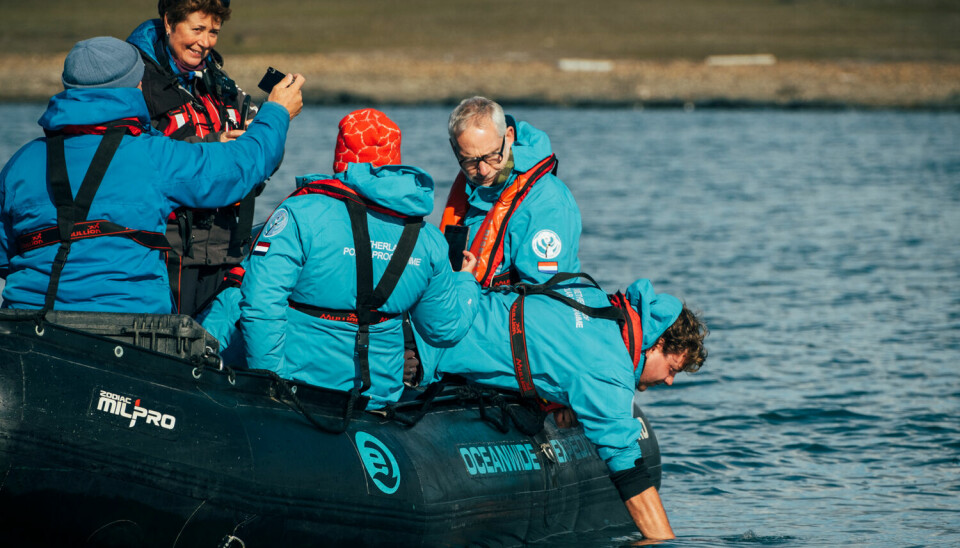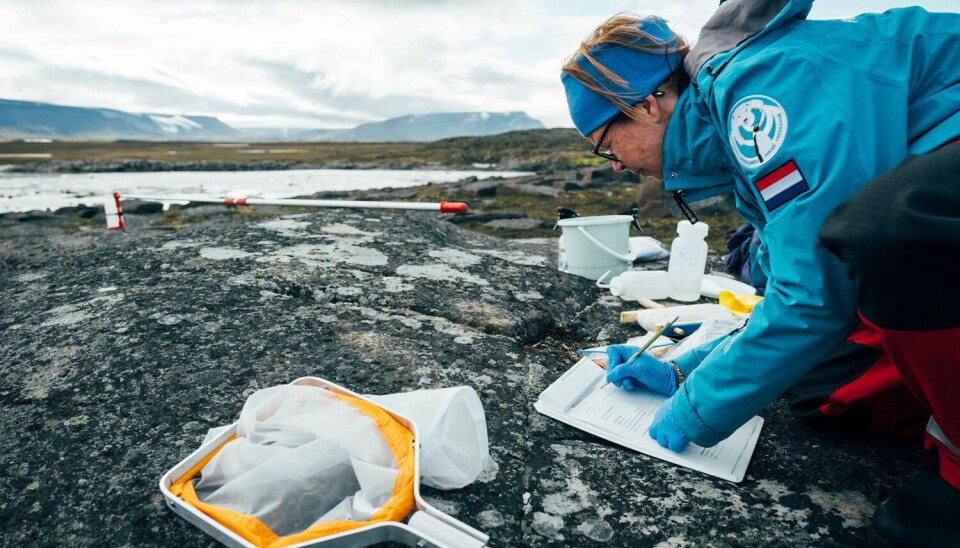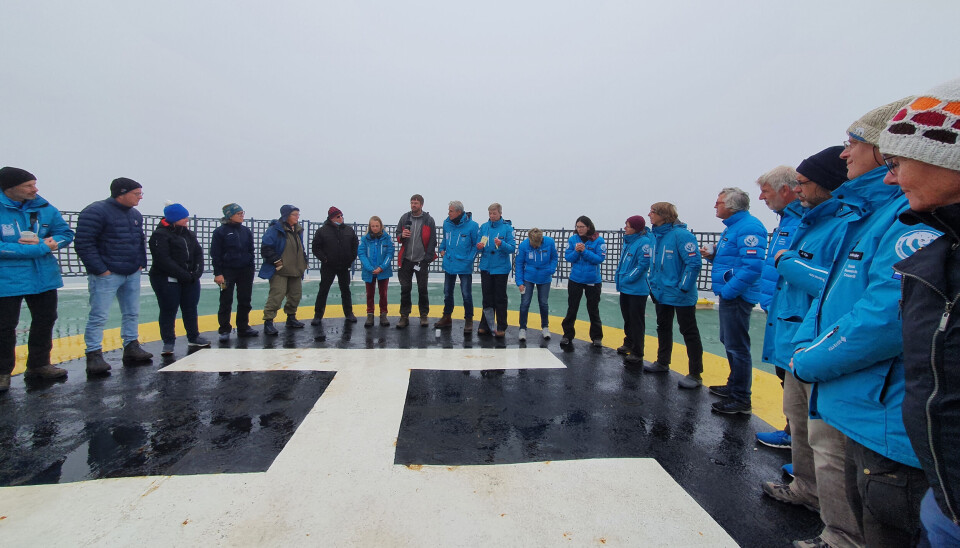Forskning - Hva vi kan lære om cruiseturisme fra SEES-ekspedisjonen (English below):
Oppleves Svalbard bærekraftig?
Hva gjør en opplevelse bærekraftig? Kan polarcruiseturisme noen gang være bærekraftig? Hvis ja, under hvilke forhold?

Denne artikkelen er mer enn to år gammel.
Disse spørsmålene er spesielt viktige på Svalbard. Reiselivssektoren er under rask utvikling og er en viktig del av Svalbard-økonomien. Vårt formål med artikkelen er å bidra til pågående samtaler om paradoksene ved bærekraftig polarturisme, ved å dele erfaringer og perspektiver på hva bærekraft kan bety fra et passasjersynspunkt.
I juli 2022 ble SEES-ekspedisjonen (Scientific Expedition Edgeøya Svalbard) til Edgeøya organisert som en kombinert vitenskapelig og turistreise. Den samler forskere og turister for å overvåke miljø- og klimaendringer i avsidesliggende deler av Svalbard. En vitenskapelig rapport om passasjerers erfaringer fra ekspedisjonen, deres syn på (u)bærekraftig turisme og forskning basert på en workshop holdt om bord er nå publisert i The Polar Journal.
SEES-ekspedisjonen er ingen vanlig arktisk cruise; hovedambisjonen til SEES var miljøovervåking av økologiske variabler og prosesser, inkludert klimaendringer. Et annet formål var å øke samarbeid mellom forskere med ulik fagbakgrunn. Turen, operert av Oceanwide Expeditions, ga dessuten turister muligheten til å være en del av ekspedisjonen og dermed bidra til forskning i Arktis. SEES tiltrakk seg rundt 100 deltakere av forskjellige (for det meste nederlandske) nasjonaliteter, hvor de fleste var forskere (52) og turister (35), i tillegg til representanter fra det nederlandske forskningsrådet (4) og politikere (3), journalister (7) og kunstnere (1), støttet av guider (8) og båtmannskapet (44). Til tross for det ukonvensjonelle passasjeroppsettet, samlet SEES-ekspedisjonen miljøbevisste besøkende og representerer dermed en relevant plattform for å diskutere kompleksiteten til hva bærekraftig turisme kan bety.

Workshopen om bord avslørte at den største fordelen med ekspedisjonen var å sette foten på land og samhandle med mennesker og steder. Passasjerer understreket viktigheten av forbindelse mellom mennesker og miljø. Det unike fysiske miljøet på Svalbard, det høyarktiske landskapet og dets innbyggere gir besøkende muligheten til å utvikle dyp følelsesmessig tilknytning gjennom den fysiske opplevelsen av å «være der ute». Noen beskriver hvordan de «ble forelsket i Arktis», andre bemerket at det vakre landskapet skaper ærbødighet og følelsen av å være liten. På samme måte hadde menneskelige relasjoner, utviklet ved å møtes, samarbeide, dele kunnskap og erfaringer, også en stor verdi for SEES-deltakere. Takket være ekspedisjonen utviklet passasjerene forståelse for hvordan arktisk forskning utføres. Å kombinere turisme med vitenskap ga turister en følelse av legitimitet; de hadde en grunn til å utforske Svalbard utover ens individuelle glede.
Det var enighet blant forskere og turister om at dagens praksis for cruiseturisme, med luksuriøse cruiseskip som reiser rundt Arktis, ikke er bærekraftig. Noen fikk en aha-opplevelse og kalte «bærekraftig cruiseturisme» en «motsigelse i seg selv». SEES-passasjerene foreslo forskjellige måter å begrense og redusere (de negative virkningene av) turisme på. Samtidig søkte de kreative måter å tilføre verdi på, for eksempel gjennom å kombinere folkeforskning med opprydding av strender under landinger. Men paradokset vedvarer. Bør det være grenser for antall besøkende til disse regionene? Er bærekraftig opplevelse av Svalbard bare mulig for noen få utvalgte? Kan det å kombinere turisme og vitenskapelige aktiviteter virke legitimt? Eller er det bare et falskt argument for å fortsette uholdbar praksis? Vi håper forskningen vår kan bringe oss nærmere svarene på alle disse viktige spørsmålene.
Annette Löf, Zdenka Sokolíčková & Nathalie A. Steins (2023) Experiencing Svalbard sustainably? Reflecting on what we can learn about polar cruise tourism from the SEES expedition, The Polar Journal, https://doi.org/10.1080/2154896X.2023.2205249

Experiencing Svalbard sustainably?
What we can learn about polar cruise tourism from the SEES expedition
In
July 2022, the Scientific Expedition Edgeøya Svalbard (the
SEES expedition) was organised as a combined scientific and touristic journey,
gathering scientists and paying tourists to monitor environmental and climate
change
in remote parts of the Svalbard archipelago. A scientific report on passengers’ experiences from the expedition and views on
(un)sustainable tourism and research based on a workshop held on-board has now
been published in The Polar Journal.
What makes an experience sustainable? Can polar cruise tourism in the High Arctic ever be sustainable? If so, under what conditions? These questions are of particular importance in Svalbard. Its rapidly developing tourism sector being an important part of the Svalbard economy. Our purpose of the article is to contribute to ongoing conversations on the paradoxes of sustainable polar tourism by sharing experiences and perspectives on what sustainability can mean from a passenger point of view.

The SEES expedition is not a regular Arctic cruise since the primary ambition of SEES was environmental monitoring of ecological variables and processes, including climate change. A second purpose was to increase collaborations between scientists with different disciplinary backgrounds. The cruise, operated by Oceanwide Expeditions, moreover, offered tourists the opportunity to be part of the expedition and thereby become citizen scientists in the Arctic. SEES attracted around 100 participants of different (mostly Dutch) nationalities, with the majority being scientists (52) and tourists (35), accompanied by representatives from the Dutch Research Council (4) and policymakers (3), journalists (7) and artists (1), supported by guides (8) and the boat crew (44). Despite the unconventional passenger setup, the SEES expedition brought together environmentally aware visitors and thus offers a relevant platform to discuss the complexity of what sustainable tourism can mean from diverse standpoints.
The on-board workshop revealed the greatest benefit gained from the expedition was setting foot on land and interacting in person with people and places. Passengers stressed the importance of human-environmental connection. The unique physical environment of Svalbard, the high Arctic landscape and its inhabitants offer visitors the opportunity to develop deep emotional connection through the physical experience of „being there“. Some describe how they “fell in love with the Arctic”, others remarked on the awe-inspiring beauty and feeling small at the same time. Similarly, human-relational aspects developed by meeting, collaborating, sharing knowledge and experiences also added value to SEES participants. The expedition generated support for and passengers developed understanding of the conditions under which Arctic research is conducted. Combining tourism with science provided tourists with a sense of legitimacy, articulating a reason to explore Svalbard beyond one’s individual pleasure.
There was an agreement among scientific and touristic passengers that current practices of cruise tourism, with luxurious cruise ships travelling the remote high Arctic, is not sustainable. Some experienced a change of heart, dubbing „sustainable cruise tourism a „contradiction in terms“. The SEES passengers suggested different ways of limiting and reducing (the negative impacts of) tourism, while creatively seeking ways to add value, through for example, combining citizen science and compulsory clean-ups of beaches during landings. But the main tension persists. Should there be limits to the number of visitors to these regions? Is sustainably experiencing Svalbard only possible for a select few? Can combining tourism and scientific activities act legitimating? Or is this a false argument to continue unsustainable practices? We hope the findings from our research will get us closer to the answers to all these important questions.

Annette Löf, Zdenka Sokolíčková & Nathalie A. Steins (2023) Experiencing Svalbard sustainably? Reflecting on what we can learn about polar cruise tourism from the SEES expedition, The Polar Journal, https://doi.org/10.1080/2154896X.2023.2205249
